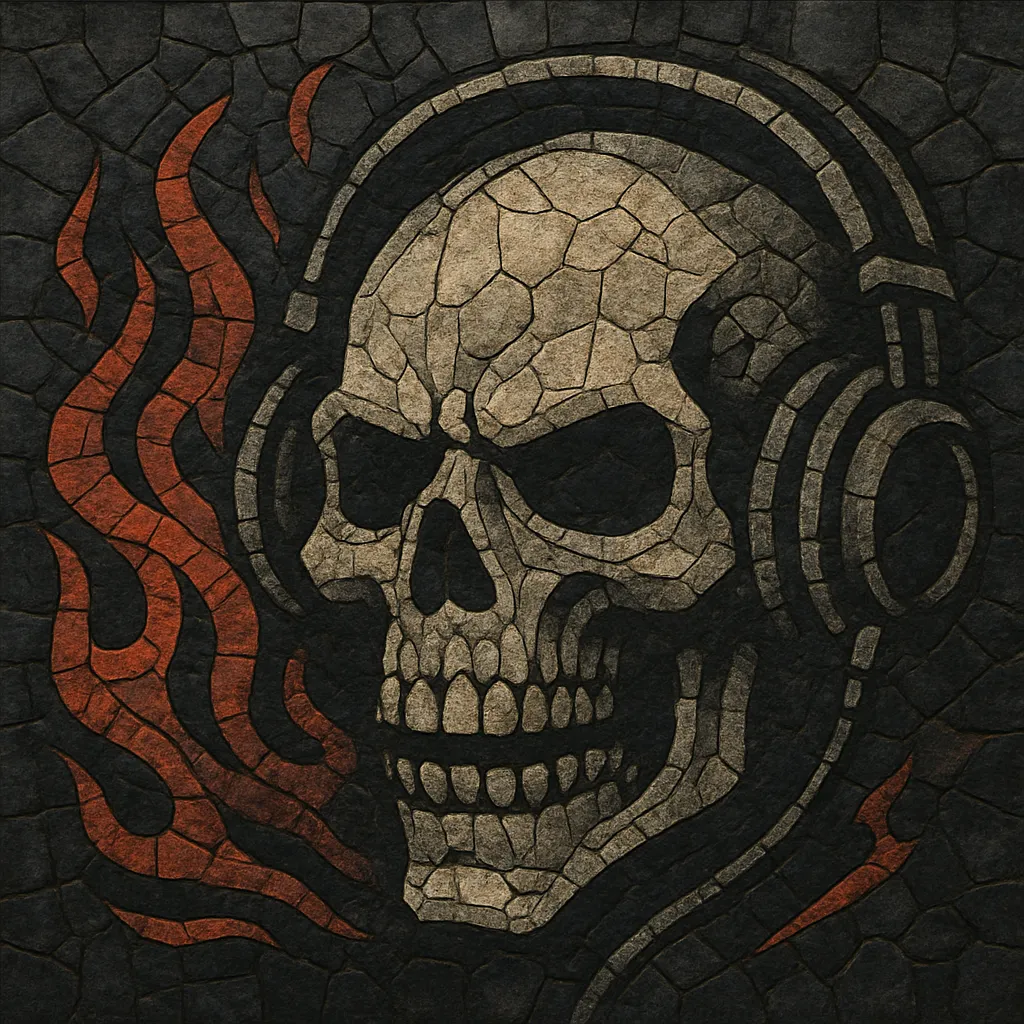Deathchant hardcore is a UK-born strain of hardcore techno associated with the Deathchant Records aesthetic.
It fuses the relentless 4/4 drive and distorted kick drums of gabber with chopped Amen breaks, jungle edits, and hip‑hop or ragga vocal snippets. The result is a style that sits between gabber, breakcore, and drum & bass—abrasive, sample-heavy, and engineered for maximum impact on loud systems.
Production emphasizes extreme distortion, clipping, saturation, and rapid-fire edits, while arrangements alternate between steamrolling gabber passages and explosive breakbeat switch‑ups. Tempos typically range from 175 to 195 BPM, with a raw, industrial edge and rave-stab energy.
Deathchant hardcore emerged from the UK free party and hardcore techno scenes in the mid‑1990s. Centered around the output and DJ culture linked to Deathchant Records (spearheaded by Hellfish and closely allied artists like The DJ Producer), the style pushed beyond Dutch gabber by hard‑wiring chopped breakbeats and jungle sensibilities into the genre’s distorted 4/4 framework. Early releases established a template of oversized kicks, crunching distortion, and rapid sample collage that differentiated the sound from continental mainstream hardcore.
The signature was a collision of gabber’s pneumatic drive with Amen-break mayhem, hip‑hop and ragga vox cuts, rave stabs, and industrial textures. The UK emphasis on breakbeats, DJ‑friendly edits, and crate‑digging sample culture gave the style a gritty, hybrid character—harder and more percussively chaotic than most European hardcore techno of the time, yet more 4/4 and rave‑primed than contemporary breakcore.
Through the 2000s, the sound circulated via vinyl, white labels, and free‑party rigs, influencing adjacent scenes. Artists expanded the palette with darker industrial timbres, tighter engineering, and ever more intricate break edits. The approach cross‑pollinated with breakcore, drum & bass, and later industrial hardcore circuits, laying foundations for heavier DnB/hardcore fusions.
In the 2010s, a renewed appreciation for hybrid gabber/breakbeat approaches led to fresh projects that echoed the Deathchant ethos—big distorted kicks, rowdy vocal chops, and Amen carnage—updated with modern sound design. The style’s DNA can be heard in crossbreed, skullstep‑leaning DnB, raggatek‑flavored hardtek, and contemporary hardcore breaks, confirming Deathchant hardcore’s lasting imprint on extreme dance music.


